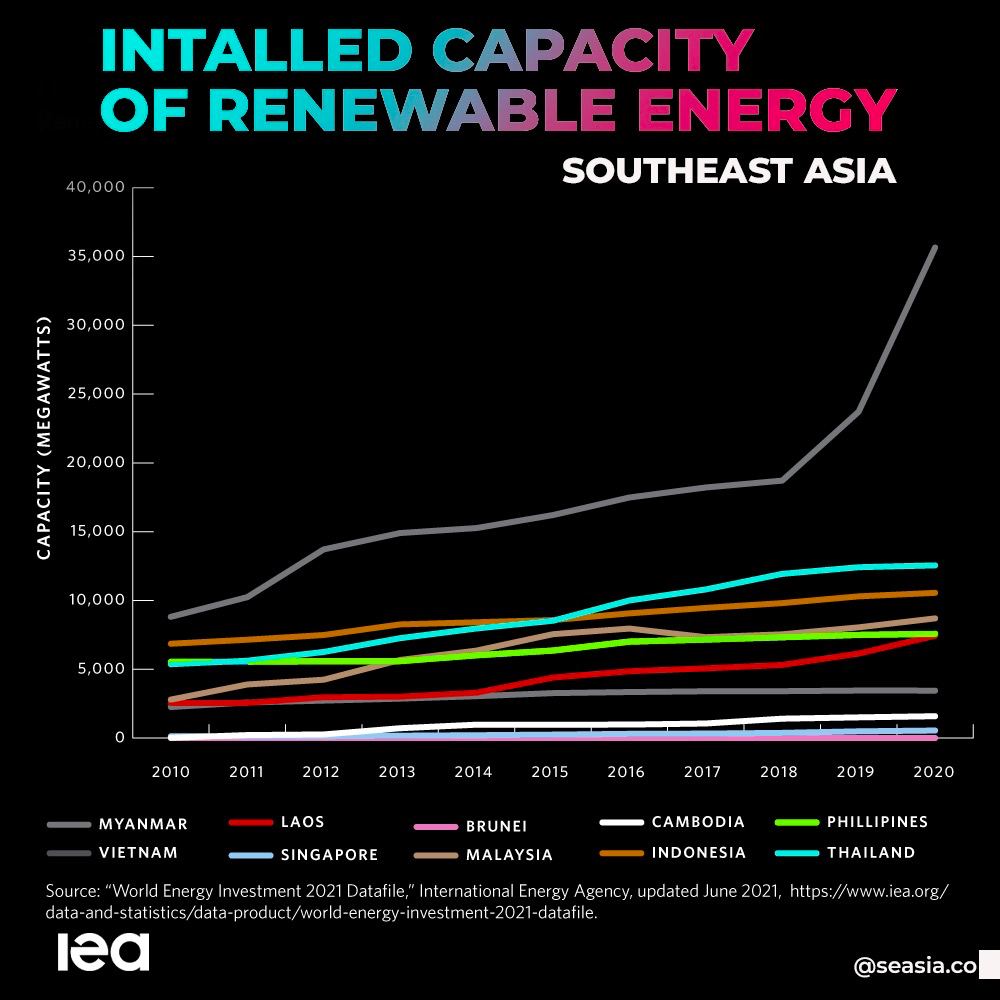Southeast Asia is going through an energy transition and there’s opportunity to scale up renewables in the region, according to the chief executive officer of a Philippines-based energy firm.
"We're quite positive on renewables, obviously, in Southeast Asia," AC Energy's John Eric Francia told CNBC's "Street Signs Asia," adding that the company has gained a lot of traction since switching to cleaner energy sources in 2016.
According to him, AC Energy currently has 2,100 megawatts of renewable capacity and plans to raise it to 5,000 megawatts by 2025. Around 80% of the company's capacity comes from renewable sources, according to the corporation, which has operations in the Philippines, Vietnam, Indonesia, India, and Australia.

While he acknowledged that the change would be gradual, he stated that recent events had highlighted the renewable energy possibilities.
According to the Carnegie Endowment for International Peace, rising domestic demand in 2022 will increase Southeast Asia's energy consumption, putting strain on the region's ability to reconcile short-term energy supply needs with longer-term goals of more sustainable growth through clean energy.
Then The International Energy Agency, the region's energy demand will increase by 60% by 2040, accounting for 12% of the global increase. Electricity demand is predicted to grow at a rate of 4% per year through 2040, double the global average.

Electricity currently accounts for only 16 percent of Southeast Asia's overall energy consumption, but this will increase as the region experiences greater demand for cooling and other gadgets as a result of rising wages.
The region has set lofty ambitions for itself, aiming to be net-zero by the first part of the century. To get there, governments must work hard to transition to renewable energy.
Vietnam, for example, still gets 84 percent of its energy from fossil fuels, with coal accounting for half of it. With Singapore at 98 percent, Thailand at 79 percent, Indonesia at 76 percent, Malaysia at 67 percent, and the Philippines at 66 percent, the rest of Southeast Asia relies less on coal, but its energy sources are strongly reliant on other fossil fuels. To put it another way, the region has a lot of space for growth.

Nonetheless, there has been noticeable progress in the region. The ASEAN Plan of Action for Energy Cooperation outlines ideas for a regional power infrastructure, a single liquefied natural gas market, cleaner coal technology, increased renewable energy and civilian nuclear energy capabilities, among other things.
And things have been moving forward. Despite its reliance on fossil fuels, Vietnam has emerged as Southeast Asia's renewable-energy leader, owing to a combination of favorable tariffs and tax incentives.
More is on the way, since its master plan contains a funding component to assist it in making the transition to a greener route. The region's reliance on fossil fuels opens the door to a more sustainable supply mix, but the shift will be difficult, as it will require a deft balancing of greater energy demand and cleaner energy supply without fuelling inflation, eroding business margins, or raising consumer expenses.
Source : CNBC.com, Carnegie Endowment for International Peace


















